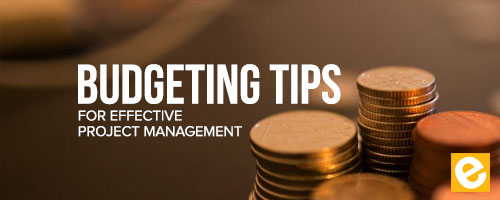
Construction Budgeting Tips for Effective Project Management
Table of Contents
Construction Budgeting Tips for Effective Project Management
The construction project manager (PM) is responsible for juggling a variety of tasks from the project’s inception to its completion. How does the project manager ensure that budgeting does not get lost in the mix? It is impossible for a PM to do it all (and do it well) without utilizing some type of project management tool. There are some all-inclusive project management tools that allow the PM to view the progress of a project, schedule employees, track materials, and do virtually all of the tasks necessary to do their job effectively. There are also more specific applications that the PM can utilize such as a budgeting application to allow the PM to set the budget and monitor how well the team is adhering to it.
Here are some construction budgeting tips for effective project management:
Don’t forget to schedule
To set an accurate budget before the onset of a project, the project manager must first create an effective schedule that will allocate resources to each necessary task. After the project manager knows what resources (labor and material) is required to complete each task, he must work to estimate how much these resources are going to cost. The project manager can use an estimation tool to help him at this stage, and should also seek the expertise of engineers and architects who may have more knowledge about the resources being utilized. As soon as the PM feels as though he has a grasp on the costs of what he will be working with, he can set the budget.
Utilize a budget application
The project manager must use a budgeting tool that will allow the PM to more accurately predict costs and track spending. These applications should be capable of estimating, project scheduling, and productivity tracking. Utilizing a budgeting application will allow the project manager to do estimating and budgeting in one step rather than having to enter the data twice. By using a tool like this, data entry will be streamlined, and redundant processes can be eliminated.
Use technology to cut costs in the long run
Aside from the direct benefits of using a budgeting tool to increase accuracy and help lighten the workload, technology is a great way to improve efficiency and lower costs in the long run. Project management solutions, BIM, and virtual reality are all great examples of this. BIM and virtual reality improve the decision-making process and eliminate costly rework, while the project management solution saves time and money by streamlining mundane tasks.
Keep an eye on labor productivity
The project manager cannot just make the schedule, set a budget and disappear for the remainder of the project. In fact, one of the primary duties of the PM is to monitor progress at every step. Part of monitoring is keeping an eye out for labor productivity, which includes: labor hours and overtime. A project management solution will help the PM to be able to track employee’s hours and can alert the PM when an employee is getting close to going into overtime pay. This transparency of labor materials will allow the PM to be more on top of regulating hours.
Under-promise and over-deliver
One of the biggest complaints from clients is that a project exceeded the given budget. We all know that a project rarely goes according to plan, and that deviation from the plan often incurs unexpected costs. Since we know this, why don’t we account for this in the original budget? Capterra recommends adding at least 10% of the total budget for unexpected costs. If the project manager makes it a habit to budget for unexpected costs, projects will consistently finish under-budget, which will lead to higher overall client satisfaction.
Resources: